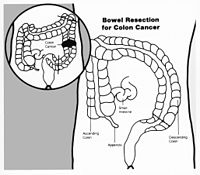
Photo from wikipedia
BACKGROUND Open abdomen (OA) treatment in patients with peritonitis is increasing worldwide. Various temporary abdominal closure devices are being used. This study included patients with complicated diffuse secondary peritonitis, OA,… Click to show full abstract
BACKGROUND Open abdomen (OA) treatment in patients with peritonitis is increasing worldwide. Various temporary abdominal closure devices are being used. This study included patients with complicated diffuse secondary peritonitis, OA, and vacuum-assisted wound closure and mesh-mediated fascial traction (VAWCM). The aim of this study was to describe mortality and major morbidity in terms of delayed primary fascial closure and enteroatmospheric fistula rates. METHODS This was a single-academic-center retrospective study of consecutive patients with diffuse peritonitis, OA, and VAWCM between years 2008 and 2016. Descriptive and univariate analyses were performed. RESULTS Forty-one patients were identified and analyzed. Median age was 59 years, preoperative septic shock was diagnosed in 54% (n = 22), and 59% (n = 24) had a postoperative peritonitis. Mortality was 29% (n = 12), and 76% (n = 31) of patients were admitted in the intensive care unit. The median duration of OA was 7 days with a median of two dressing changes. Delayed primary fascial closure rate among survivors was 92% (n = 33), and enteroatmospheric fistulas developed in 7% (n = 3). In a subgroup analysis, patients with OA in the primary laparotomy for peritonitis (n = 27) were compared with patients with OA in the subsequent laparotomies (n = 14). There were no significant differences between groups. CONCLUSIONS The VAWCM technique in patients with complicated secondary diffuse peritonitis and OA yields excellent results in terms of delayed primary fascial closure rate and a low number of enteroatmospheric fistulas. It seems to be safe to close the abdomen at the index laparotomy, if possible, even if there is a risk of a need of OA later. LEVEL OF EVIDENCE Therapeutic/care management study, level IV.
Journal Title: Journal of Trauma and Acute Care Surgery
Year Published: 2017
Link to full text (if available)
Share on Social Media: Sign Up to like & get
recommendations!